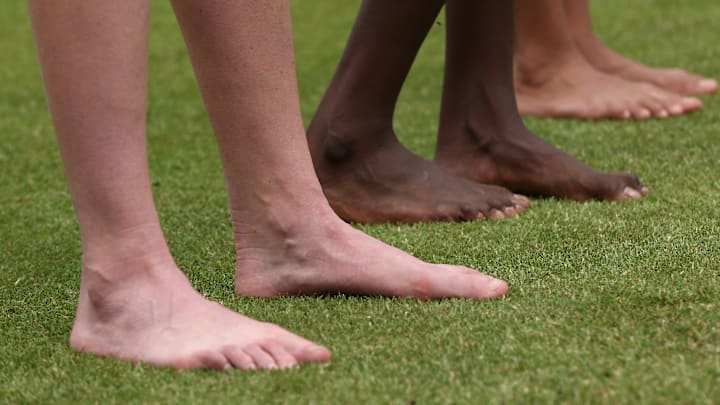Have you ever noticed that your second toe is longer than your big toe? You’re not alone! This foot shape, known as Morton’s toe, is more common than you might think. While it may not seem like a big deal, this small difference in foot structure can lead to surprising issues, from foot pain and joint stress to trouble finding comfortable shoes. If you have this condition or know someone who does, keep reading to find out what you can do about it.
The impact of Morton’s toe on daily life
Increased foot pain and discomfort
Morton’s toe changes the way pressure is distributed across the foot, shifting more weight onto the ball of your foot, which can lead to inflammation and pain. People with Morton’s toe may also experience arch discomfort, especially if they don’t wear properly supportive shoes.
Higher risk of foot conditions
Because Morton’s toe alters the way your weight presses on the foot, it can contribute to the development of calluses, hammertoes, and bunions due to the increased pressure and friction that can lead to changes in toe alignment over time. Some experts suggest that people with a longer second toe might also be at a greater risk of developing plantar fasciitis, a painful inflammation of the foot’s arch.
Gait and posture issues
The way we walk, or our gait, depends heavily on foot structure. People with Morton’s toe often overpronate, meaning their feet roll inward more than usual when they walk. This can lead to misalignment in the knees, hips, and lower back, potentially causing long-term discomfort or injury. Some individuals even develop knee pain or lower back strain due to the subtle imbalances in their walking patterns.
Footwear challenges
Shoe fit is crucial for individuals with Morton’s toe. Standard shoes often assume the big toe is the longest, which can lead to toe crowding, pressure, and discomfort for those with a longer second toe. People with this condition may find wider-toe box shoes or custom-fitted footwear to be more comfortable and beneficial in preventing foot pain.
How to manage and prevent issues
- Shoes with a wide toe box and good arch support help alleviate pressure on the second toe and reduce foot strain. Many great brands, including Rocky Boots, have numerous models that also include high-quality insoles that will help your feet stay comfortable throughout the day.
- Custom orthotics or metatarsal pads can redistribute weight more evenly across the foot, helping to minimize pain and discomfort.
- Foot exercises that focus on strengthening the arch and improving toe flexibility can reduce stress on the second toe and improve overall foot function.
- Consider consulting a podiatrist or physical therapist for professional help.
Follow GeekSided for more scientific insights
